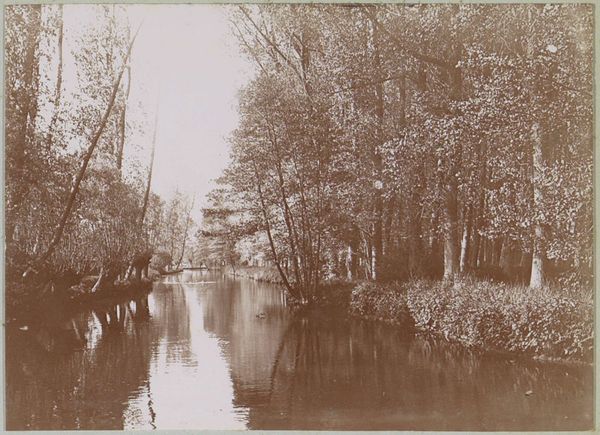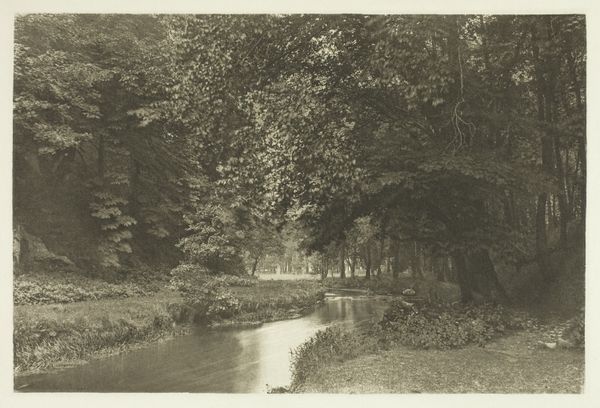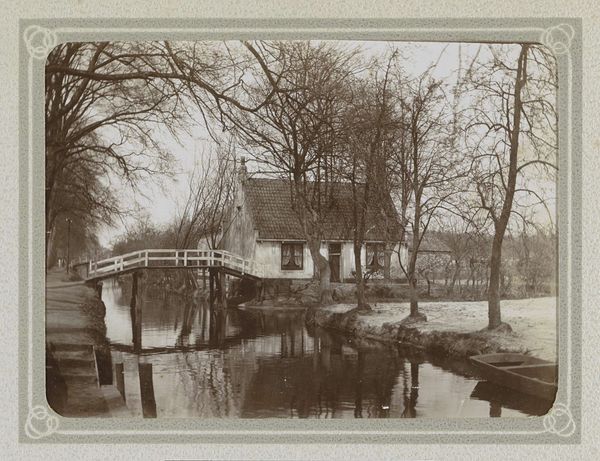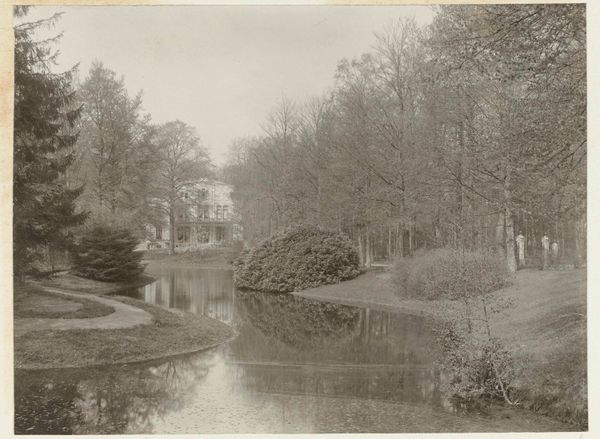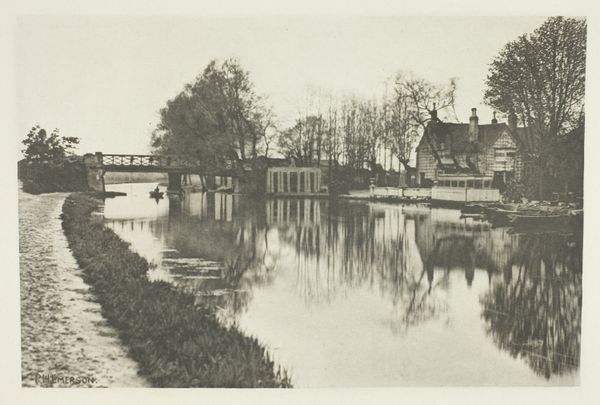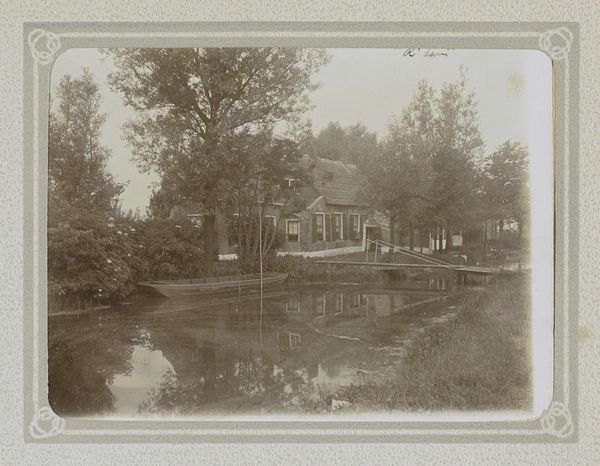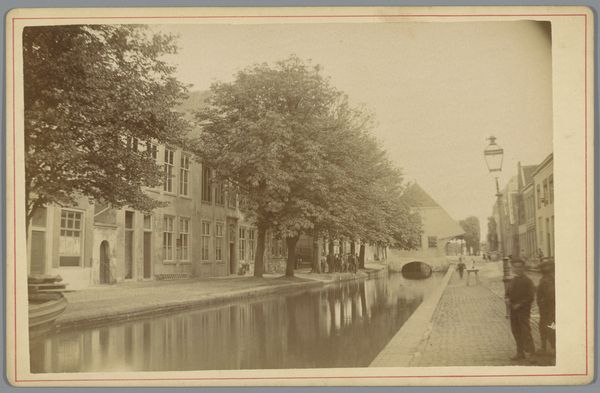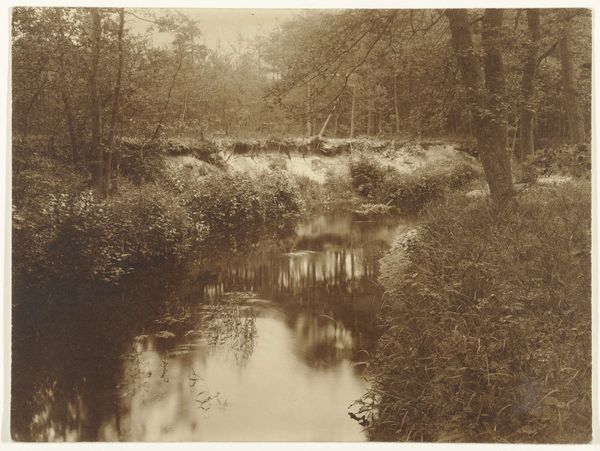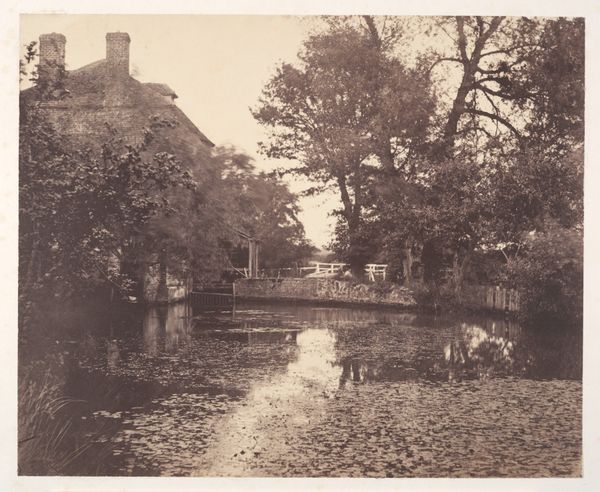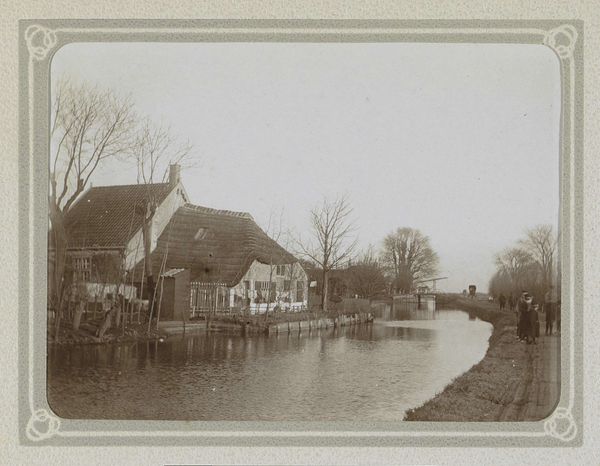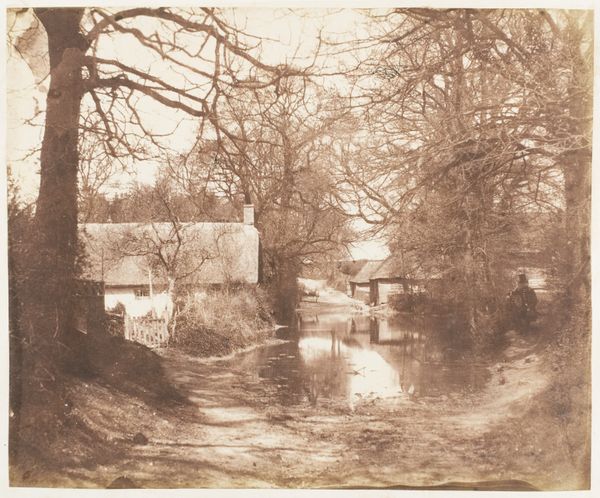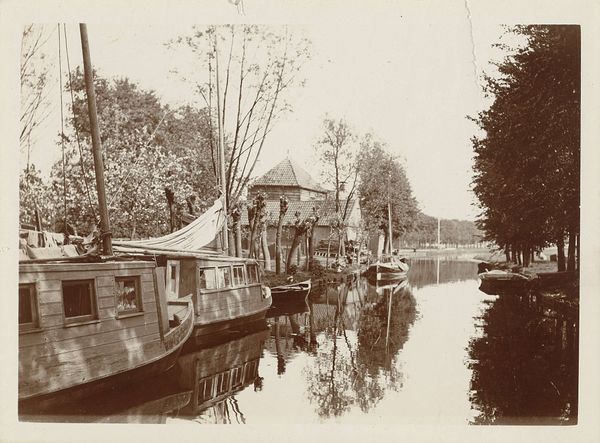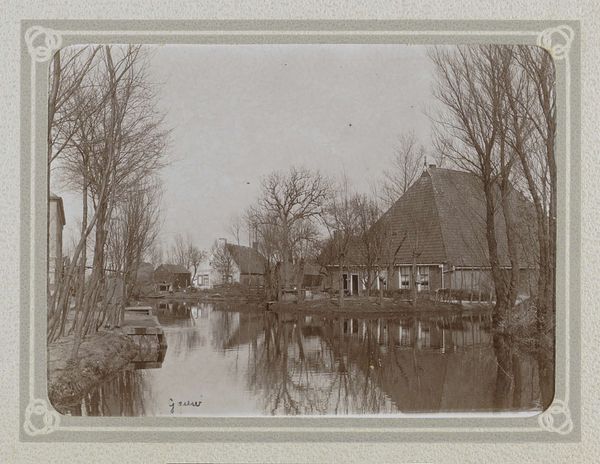
Dimensions: height 166 mm, width 227 mm
Copyright: Rijks Museum: Open Domain
Richard Tepe made this photograph of Giethoorn, using a camera as his tool. The brown and white tones create a landscape of memory. I see the way light catches on the water’s surface as a kind of mark-making. It reminds me of an Agnes Martin painting, where quiet, subtle gestures create a field of intense feeling. Thinking about the textures here, it’s interesting how Tepe uses the camera to capture the softness of the trees against the stillness of the water. The reflections on the canal are so gentle, they create this emotional depth. It’s like a dance of light and shadow, isn’t it? Like a whisper, rather than a shout. I’m drawn to how the bridge cuts across the water and creates a break in the reflections, dividing the image into sections. It creates a kind of visual rhythm, a back-and-forth between the natural and the constructed. In a way, that’s what artmaking is all about: finding those rhythms and making them visible. This recalls the photographic work of someone like Alfred Stieglitz, who similarly found a modernist visual language through landscape photography. With Tepe, we see how photography is not just about capturing reality, but about transforming it through a personal vision.
Comments
No comments
Be the first to comment and join the conversation on the ultimate creative platform.
